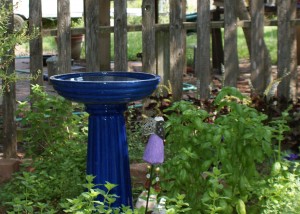Helping Drought Victims
The drought Texas is experiencing is one of the worst this state has ever seen. At the Wildlife Center, both mammals and birds are being brought in by the public in dehydrated and emaciated condition. There’s not much we can do to increase our chances of rain, but there are things we can do to help wildlife in their quest for survival during this extreme hot climate change. This article will look at what can be done to help different groups of animals. Birds Both baby and adult birds are greatly affected by the heat. The birds are either starving because their parents are struggling to find food, or the adults collapse from the traumatic heat stress they are enduring. The best way to help our native birds is to provide a water source for them to help endure these dire conditions. Generally speaking, a bird bath should be no more than 3” deep for birds. Change the water daily to avoid spreading disease. Do not chemicals to clean your birdbath. Just use a brush to scrub out any algae every few days. Weekly, you should rinse you freshly cleaned bird bath with a 10% solution of bleach and water. That’s just over 1 ½ ounces of bleach per gallon of water. Let the solution stand for a couple of minutes and rinse. This will kill parasites and bacteria. Place the birdbath near some small bushes or low cover. This makes them feel more secure and not out in the open and vulnerable to predators. It also allows them to have a place to fly to in order to preen their feathers after bathing. If possible, textured birdbaths such as concrete are preferred so birds [...]

